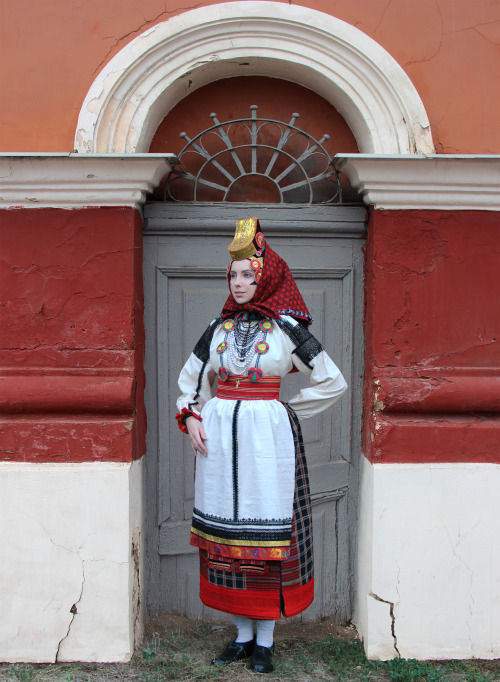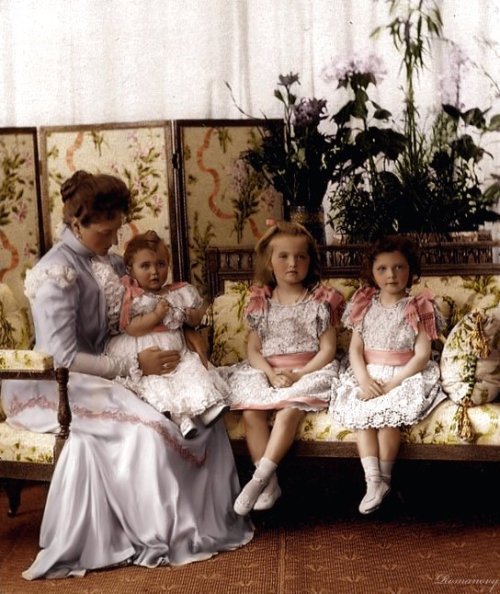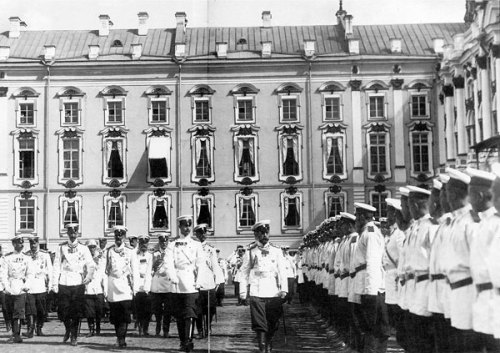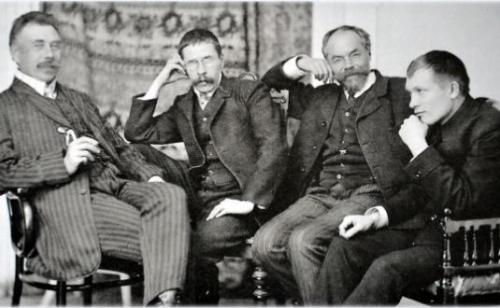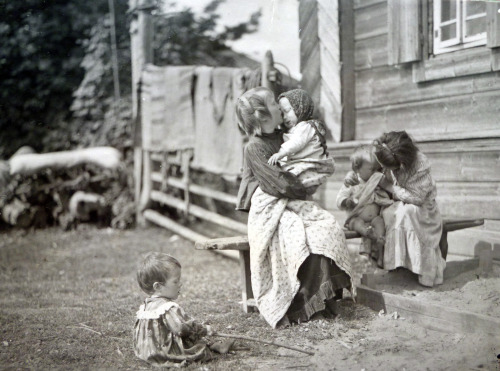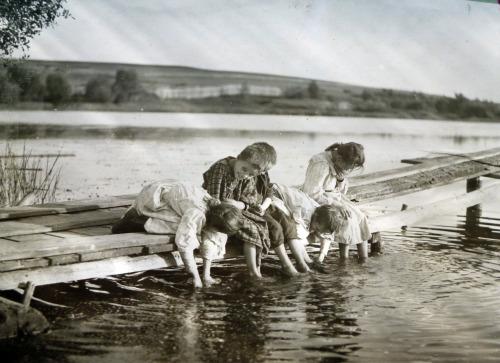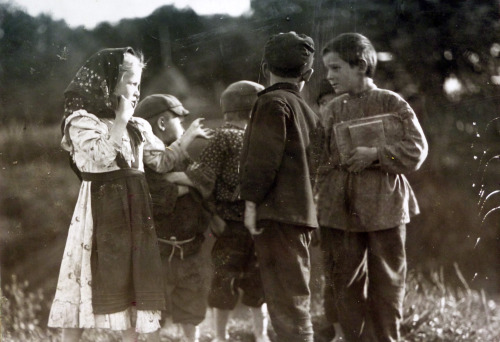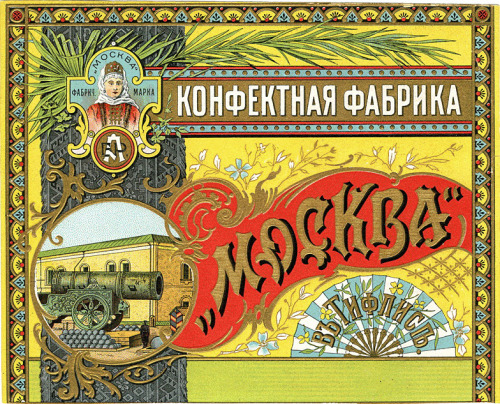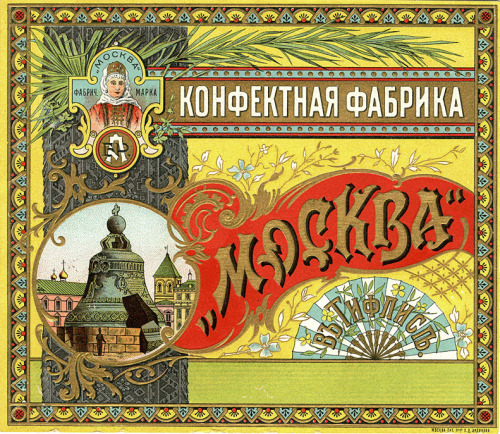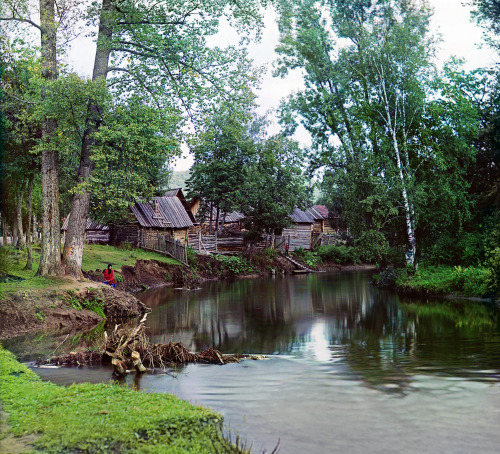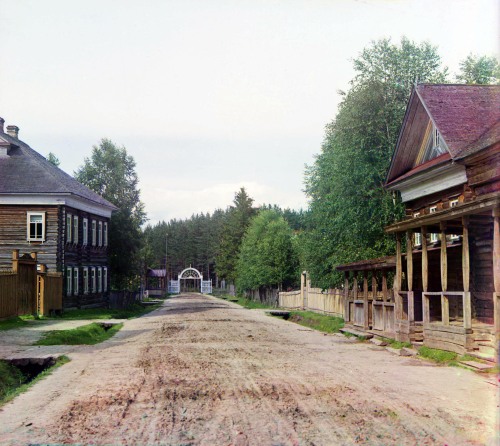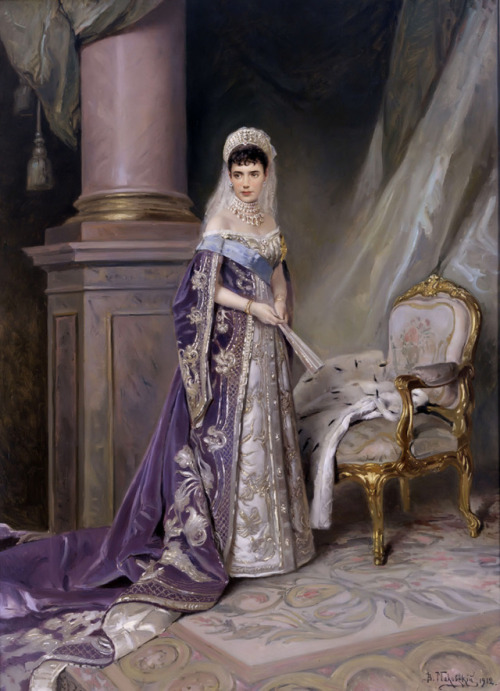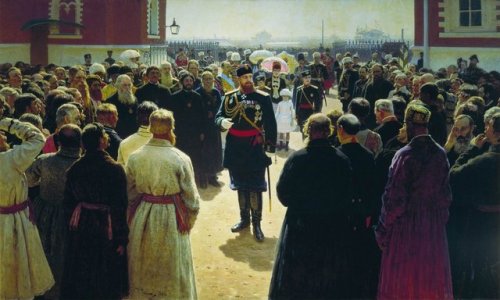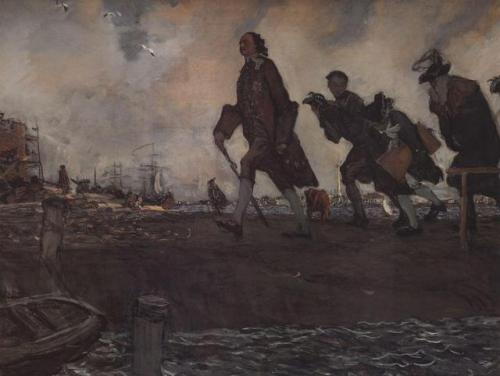#российская империя
Белгородский свадебный народный костюм начала 20 века, Российская империя. Он же традиционный костюм молодухи - молодой жены со дня свадьбы до рождения первого ребёнка.
Post link
Императрица Александра Федоровна с дочерьми Марией, Ольгой и Татьяной. 1900. (Раскрашеное фото)
Post link
Император Николай II, великие князья и генералы обходят строй лейб-гвардии Преображенского полка. Царское Село. 1902
Post link
Вятский художественный кружок. Слева направо: Николай Румянцев, Сергей Лобовиков, Николай Хохряков, Алексей Исупов. Фото С. Лобовикова. 1910–1912
Post link
Vladimir Makovsky. Empress Maria Feodorovna.
1912. State Russian Museum, Saint Petersburg.
One of the most tragic figures of European royalty is the Empress Maria Feodorovna, widow of Alexander III, and mother of Nicholas II of Russia.
The revolution that toppled the Romanovs came as no surprise to many members of the imperial family. Only Nicholas and Alexandra seemed shocked by the Russian people’s decision to overthrow a regime that had epitomized inefficiency and corruption. Maria Feodorovna had one opportunity to see Nicholas II just after his abdication in early 1917. After a brief encounter with her son, the Dowager Empress headed towards one of the imperial villas in the Crimea. While revolution spread throughout Russia, Maria Feodorovna was joined at her seaside refuge by Grand Duke Alexander and Grand Duchess Xenia, their six sons, Prince Yussupov, his parents and his wife Grand Duchess Irina, daughter of Xenia and Alexander, and Grand Duchess Olga and her new husband Colonel Koulikovsky.
Nicholas and Alexandra, along with their children, were sent into exile in the provinces. The imperial couple were initially sent to Tobolsk, and later on moved to Yekaterinburg, near the Ural Mountains. They were all assassinated by Bolshevik guards in Yekaterinburg in July 1918. Grand Duke Michael was also apprehended and eventually executed while in prison during the summer of 1918. Not content with the massacre of these Romanovs, Bolsheviks went around the civil war torn country trying to execute all remaining Romanovs. The year 1918 also saw the assassination of the following Romanovs: Grand Duke Paul Alexandrovich, uncle of Nicholas II; Grand Duke Nicholas Constantinovich, grandson of Nicholas I; three children of Grand Duke Constantine Constantinovich: Ivan, Constantine and Igor; Grand Duke Dimitri Constantinovich, grandson of Nicholas I; Grand Dukes Nicholas Michaelovich, Serge Michaelovich and George Michaelovich, grandsons of Nicholas I; Grand Duchess Elizabeth, widow of Grand Duke Serge Alexandrovich and sister of Tsarina Alexandra Feodorovna. Prince Dimitri Pavlovich Paley, son of Grand Duke Paul Alexandrovich, was also assassinated. In all nineteen Romanovs were brutally executed by the blood-thirsty Bolsheviks. The imperial family never recovered from this tragedy.
Maria Feodorovna and her surviving family left Russia in the spring of 1919. They boarded the British ship HMS Marlborough and never again set foot in their country.
On September 28, 2006, Dowager Empress Maria Feodorovna was laid to rest beside her beloved husband, Czar Alexander III at the SS Peter and Paul Cathedral in Saint Petersburg.
Post link
Ilya Repin. Alexander III receiving rural district elders in the yard of Petrovsky Palace in Moscow.
1885-1886. State Tretyakov Gallery, Moscow.
Post link
Valentin Serov. Peter I The Great.
1907. State Tretyakov Gallery, Moscow.
Peter I, or Peter the Great (1672-1725), was one of the most outstanding rulers and reformers in Russian history. He was at first a joint ruler with his weak and sickly half-brother, Ivan V, and his sister, Sophia. In 1696 he became a sole ruler. Peter I was Tsar of Russia and became Emperor in 1721. As a child, he loved military games and enjoyed carpentry, blacksmithing and printing.
Peter I is famous for carrying out a policy of ‘westernization’and drawing Russia further to the East that transformed Russia into a major European power. Having travelled much in Western Europe, Peter tried to carry western customs and habits to Russia. He introduced western technology and completely changed the Russian government, increasing the power of the monarch and reducing the power of the boyars and the church. He reorganized Russian army along Western lines.
He also transferred the capital to St. Petersburg, building the new capital to the pattern of European cities.
In foreign policy, Peter dreamt of making Russia a maritime power. To get access to the Black Sea, the Caspian Sea, the Azov Sea and the Baltic, he waged wars with the Ottoman Empire (1695—1696), the Great Northern War with Sweden (1700-1721), and a war with Persia(1722-1723). He managed to get the shores of the Baltic and the Caspian Sea.
In his day, Peter I was regarded as a strong and brutal ruler. He faced much opposition to his reforms, but suppressed any and all rebellion against his power. The rebellion of streltsy, the old Russian army, took place in 1698 and was headed by his half-sister Sophia. The greatest civilian uprising of Peter’s reign, the Bulavin Rebellion (1707—1709) started as a Cossack war. Both rebellions aimed at overthrowing Peter and were followed by repressions.
Peter I played a great part in Russian history. After his death, Russia was much more secure and progressive than it had been before his reign.
Post link

